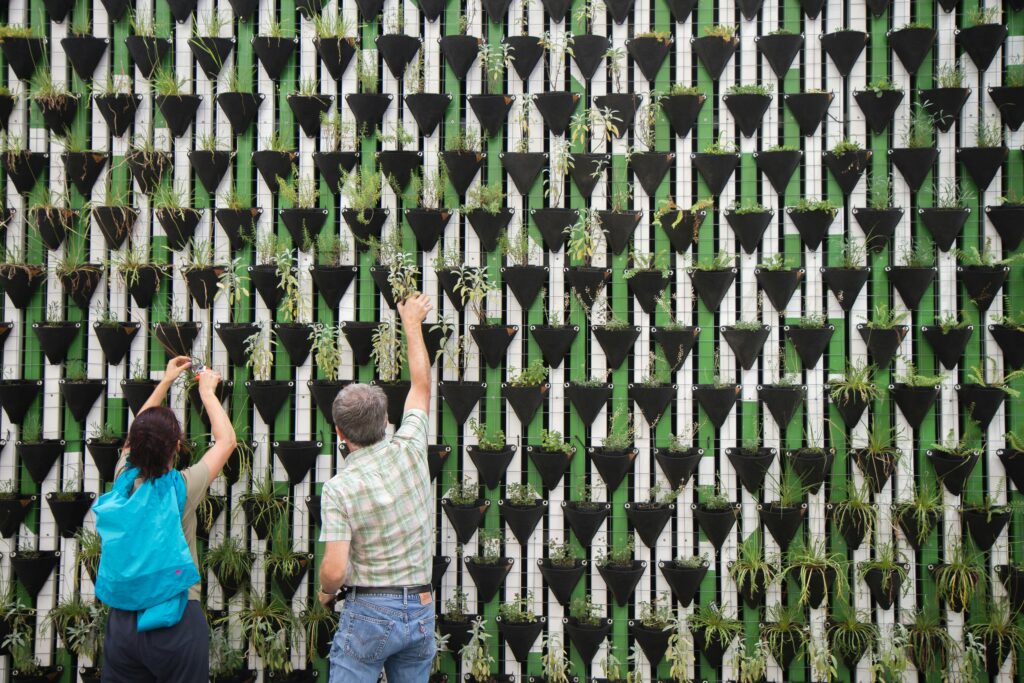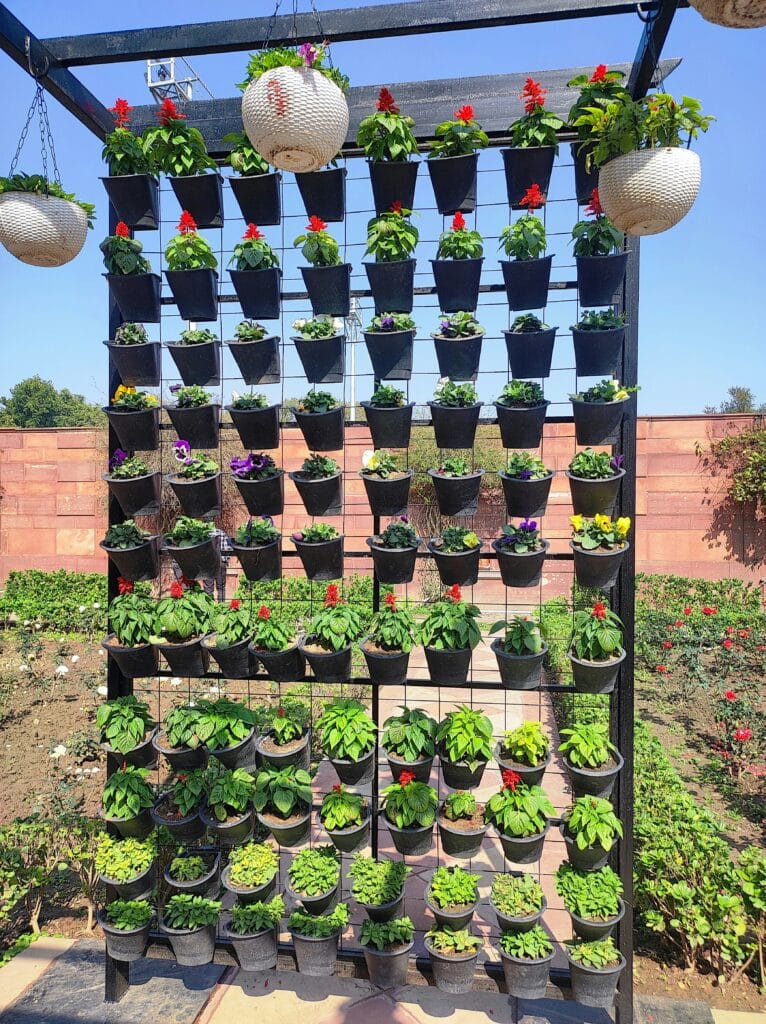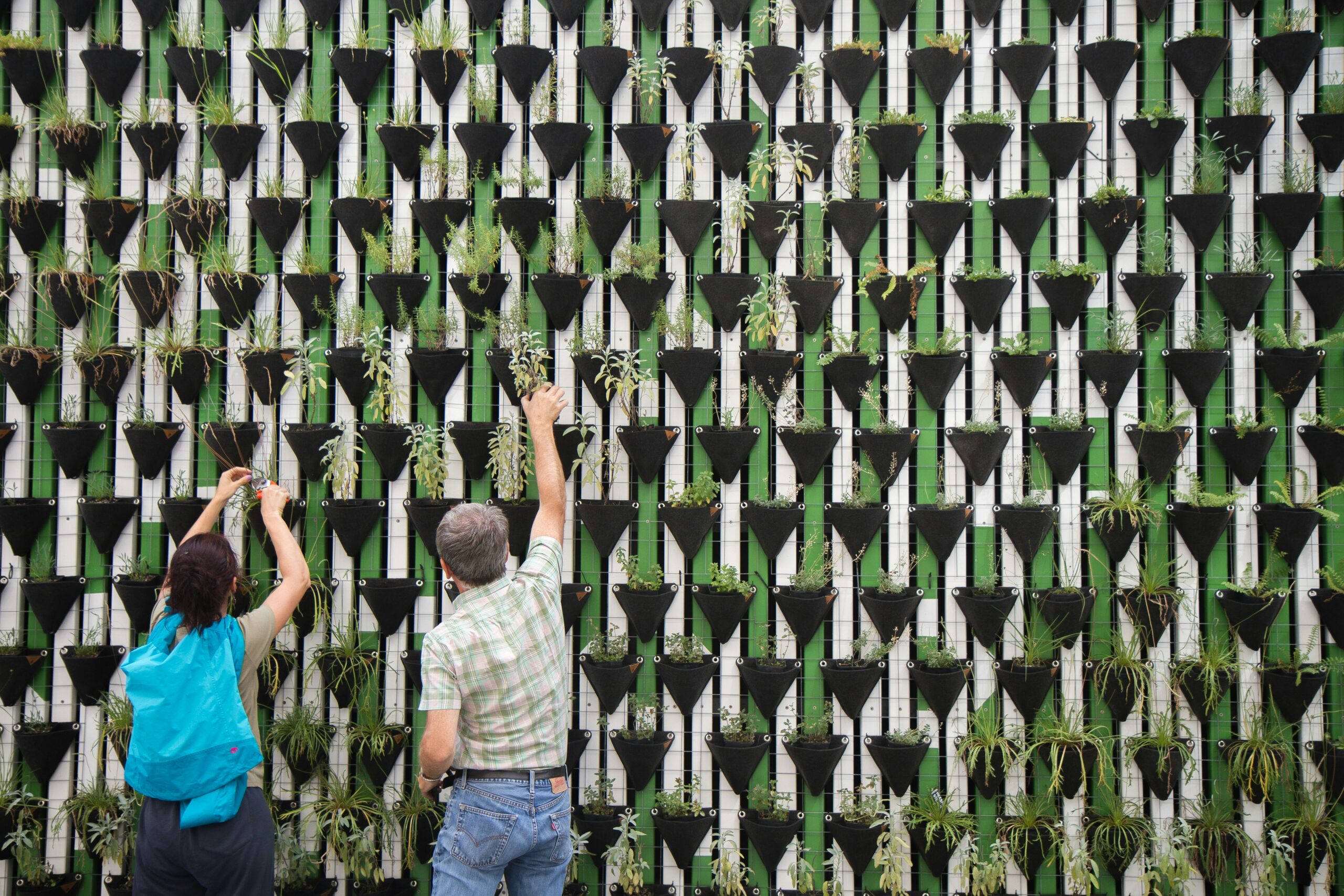Anúncios
This method of growing plants vertically not only offers a unique aesthetic appeal but also offers practical benefits such as increased growing space and improved plant health. In this post, we’ll delve deep into the world of vertical gardening, focusing particularly on the use of trellises and climbers to maximize your balcony space. Get ready to transform your outdoor oasis into an enchanting vertical garden.

From the selection of the right type of trellis to choosing the most suitable climbers for your region, we will guide you step by step on this exciting gardening journey. Regardless of the size of your balcony, there’s always a way to add some greenery and make the most of the space available. The creative use of trellises and climbers can help you turn even the smallest balcony into a lush, green sanctuary.
Anúncios
So, if you’re looking to add a new dimension to your balcony, or simply want to try a different gardening approach, this post is for you. By the end, you’ll be equipped with all the necessary knowledge to start your vertical garden and enjoy a refreshed, revitalized outdoor oasis. Let’s embark on this green adventure and learn how to maximize your balcony space with trellises and climbers! 🌿🍃🌱
Understanding Trellises and Climbers
Trellises and climbers play a critical role in maximizing balcony space. A trellis is a light frame made of bars or lattice work for supporting climbing plants. On the other hand, climbers are types of plants that grow vertically, using surrounding structures for support. They are also known as creepers or vines. When used together, trellises and climbers can transform any space into a vibrant, green oasis.
Anúncios
Types of Trellises
- Wall trellises: These are flat structures that can be attached to a wall or a fence.
- Obelisk trellises: These are freestanding and have a pyramid shape. They are ideal for plants that grow in a sprawling manner.
- Fan trellises: They have a fan-like shape and are perfect for accentuating the beauty of flowering vines.
Types of Climbers
- Flowering vines: These are perfect for adding color to your balcony. Examples include clematis, morning glory, and sweet pea.
- Fruit vines: If you want to grow edibles, consider grapevines or passion fruit.
- Foliage vines: These are perfect for adding greenery. Ivy and climbing hydrangea are popular choices.
Maximizing Space with Trellises and Climbers
Using trellises and climbers is an effective way to maximize your balcony space. The vertical growth of climbers frees up horizontal space, allowing you to grow more plants. Here are some strategies to effectively use these tools:
Choosing the Right Trellis and Climber
The right combination of trellis and climber depends on the size of your balcony, the climber’s growing habit, and your aesthetic preferences. Smaller balconies may require compact trellises, while larger balconies can accommodate more sprawling structures. Also, it’s important to choose climbers that are suitable for your region’s climate and sunlight conditions.
Strategic Placement
The placement of trellises can greatly impact the utilization of space. Placing trellises against walls or railings can free up floor space. Additionally, arranging trellises in a tiered manner can create a lush, layered look.
Maintenance of Trellises and Climbers
Caring for Trellises
Trellises made from wood or metal may require occasional treatment to prevent decay or rust. Also, check the stability of your trellises periodically to ensure they can still support the weight of your climbers.
Caring for Climbers
Climbers require regular pruning to maintain their shape and promote growth. Also, monitor your plants for signs of pests or diseases. Some climbers may require additional support, such as ties or clips, to guide their growth along the trellis.
Designing Your Vertical Garden for Function and Style
Creating a vertical garden is not only about growing upwards; it’s about intentional design that complements your outdoor space. Think of your vertical structure as a blank canvas where both utility and beauty can coexist. The balance between structure and greenery adds layers of depth and texture, transforming a plain wall or railing into a living work of art.
Consider the overall look you want to achieve. Do you prefer a neat, symmetrical pattern or a more wild, organic spread? Do you want a full privacy wall or a light, airy green accent? Your choice of materials, trellis shape, and plants will determine the aesthetic.
Materials for DIY Trellis Projects
If you’re building your own trellis, choosing the right materials is critical. Lightweight but durable options like bamboo or treated wood are ideal for most balconies. Metal trellises offer a modern look and are highly resistant to weather, but they may need a protective coating to prevent rust over time.
Wire mesh and netting are great for minimalist or budget-friendly trellises. They’re easy to cut and shape, and they offer plenty of surface area for tendrils to cling to. PVC pipe structures are another cost-effective solution and can be easily adapted for vertical or tiered garden systems.
For renters, consider non-invasive mounting solutions such as freestanding lattice panels or trellises that lean against a wall without requiring screws or bolts.
Creative Ideas to Integrate Vertical Features
Vertical gardening isn’t limited to classic trellises. With creativity, you can turn everyday items into vertical planters:
- Repurposed ladders: Place small pots on the rungs or wrap vines around them for a rustic look.
- Hanging shoe organizers: Fill each pouch with soil and low-maintenance herbs.
- Wooden pallets: Mount a pallet upright, add landscaping fabric and soil, and fill the gaps with your favorite blooms or succulents.
- Stacked crates: Create height by placing crates on their sides and stacking them in a staggered formation.
These ideas combine structure and greenery while allowing you to adjust as your needs or style change.
Best Low-Maintenance Climbers for Urban Gardeners
Not all climbers demand constant pruning and care. Many species are perfect for beginner gardeners or those looking for a low-maintenance vertical display:
- Star jasmine: A fragrant evergreen vine with glossy leaves and small white blooms. It’s hardy and adaptable to various conditions.
- Black-eyed Susan vine (Thunbergia): A cheerful climber with orange or yellow flowers that grows quickly and requires minimal attention.
- Climbing nasturtium: Easy to grow from seed, this vine offers edible leaves and flowers, making it both practical and decorative.
- Virginia creeper: A vigorous climber with stunning autumn foliage, perfect for adding seasonal interest.
When selecting climbers, consider their growth speed, bloom season, and how aggressive their spread may be. Choose varieties that suit your maintenance commitment and visual preferences.
Using Vertical Gardens for Edible Landscaping

Vertical gardens aren’t just for aesthetics—they can also be highly productive. You can create a mini kitchen garden using climbers and trellises:
- Pole beans and peas: These are natural climbers that thrive on trellises and produce continuously during the growing season.
- Tomatoes: Indeterminate varieties can be grown vertically with sturdy support and regular pruning.
- Cucumbers: Compact cucumber varieties like ‘Bush Pickle’ or ‘Spacemaster’ do well in small spaces and can be trained up trellises.
- Herbs: Many herbs, like oregano, mint, or thyme, can spill attractively from hanging planters or vertical pockets.
This method not only adds green beauty but also turns your balcony into a functional space where you can harvest your own fresh produce.
Companion Planting in a Vertical Setup
Companion planting is a traditional gardening technique that places mutually beneficial plants together. Even in a vertical system, this principle can be applied to boost plant health and productivity:
- Marigolds near tomatoes or beans help deter pests.
- Basil planted with tomatoes can enhance their flavor and reduce hornworm attacks.
- Nasturtiums attract aphids away from more delicate vines.
This approach can reduce your reliance on chemical treatments and improve your garden’s ecological balance.
Lighting Considerations for Vertical Structures
Sunlight exposure can differ greatly depending on where your vertical structure is placed. Taller installations may shade lower plants, so understanding your balcony’s light pattern is crucial.
Morning light (east-facing balconies) is ideal for most plants, providing energy without overheating. Afternoon sun (west-facing) can be intense, especially in summer, and may scorch delicate vines. South-facing spaces get all-day sun, while north-facing balconies are better suited for shade-tolerant climbers like ivy or climbing hydrangea.
Use hanging grow lights or solar-powered LEDs for shaded balconies. These not only enhance plant growth but also create a charming nighttime ambiance.
Seasonal Adjustments and Plant Rotation
Vertical gardens need to evolve with the seasons. In spring and summer, fast-growing annuals and blooming vines take center stage. As fall approaches, swap out warm-season climbers for cold-tolerant evergreens or decorative cabbage and kale in vertical containers.
Winter may require bringing planters indoors or covering them during frosts. Use breathable frost blankets or burlap wraps around your trellis base and root zones. Consider seasonal rotation as an opportunity to refresh your design and keep your garden looking vibrant year-round.
Integrated Irrigation Solutions
Watering a vertical garden evenly can be tricky, especially on taller structures. Some smart solutions include:
- Drip irrigation systems: These can be routed through the back of your trellis to deliver water directly to root zones.
- Self-watering wall planters: Built-in reservoirs make them ideal for high walls or difficult-to-reach areas.
- Upcycled water bottles or wine bottles: Invert them into the soil as slow-release watering devices.
Regularly monitor soil moisture, especially on top levels, which dry out more quickly. Group plants with similar watering needs to simplify your irrigation routine.
Supporting Wildlife and Biodiversity
Adding a vertical garden isn’t just a design statement—it’s also an invitation to urban wildlife. Many climbers and flowering vines attract pollinators such as bees, butterflies, and hummingbirds.
To encourage biodiversity:
- Choose native species or heirloom varieties.
- Mix flowering and fruiting plants.
- Add small bird feeders or insect hotels integrated into your vertical setup.
Creating this micro-ecosystem enhances your balcony’s natural value and helps support broader environmental sustainability.
Safety Considerations for Balcony Gardens
Vertical structures need to be secure, especially in windy or storm-prone regions. Always check local building codes and ensure your balcony can support the added weight of soil, containers, and water.
Use adjustable zip ties or wall anchors rated for outdoor use when mounting trellises. Place heavier containers at the bottom for stability. Avoid top-heavy setups that could tip over.
If you’re in a rental, opt for freestanding or lean-against designs that don’t require drilling into permanent structures.
Encouraging a Habit of Mindful Gardening
Vertical gardening, like all forms of urban greening, offers more than aesthetic value—it fosters mindfulness. Tending to your balcony plants, watching a vine climb higher each week, or noticing new blooms appear brings a calming rhythm to daily life.
Whether you’re sipping morning coffee surrounded by cascading flowers or winding down next to fragrant jasmine at sunset, a vertical garden can become a personal wellness haven. Carve out even five minutes a day to tend your green wall, and it will repay you with serenity and satisfaction.
Conclusion
Maximizing your balcony space with trellises and climbers effectively transforms your outdoor oasis into a lush, vertical garden. This unique approach not only adds a touch of nature to your home but also offers practical benefits such as privacy and shade. Trellises and climbers are versatile, adding aesthetic appeal to any balcony regardless of its size or shape. They also provide the perfect solution for city dwellers who crave a slice of nature in their urban surroundings. Incorporating climbers such as roses, ivy, or jasmine into your design introduces an element of fragrance, enhancing the overall sensory experience of your outdoor space.
Furthermore, trellises are not only functional but also act as art pieces, introducing an architectural element to your balcony. They can be customized to suit any personal style, from minimalist to rustic. This effortless blend of functionality and design underscores the immense potential of vertical gardening.
In short, vertical gardening is a game-changer, transforming balconies into vibrant, green spaces. With a bit of creativity, trellises, and climbers, you can create your own personal outdoor oasis, a testament to the power of innovative gardening. Remember, your balcony is an extension of your home. So why not make the most of it and venture into the world of vertical gardening? You might just discover a new passion.

